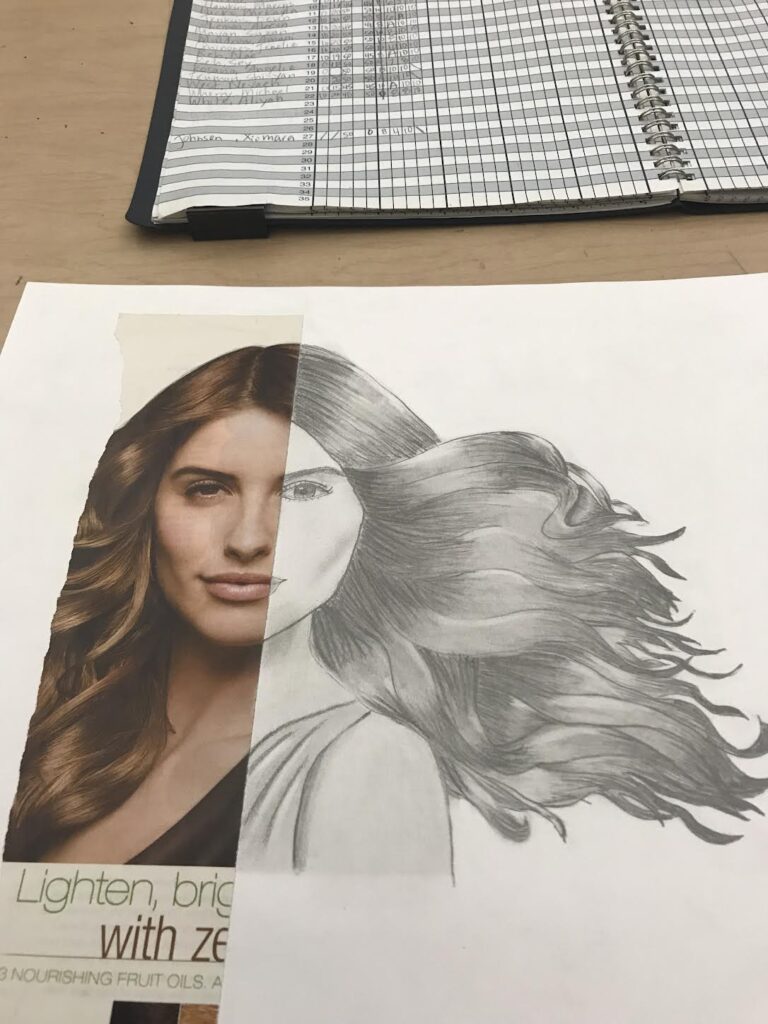
The Foundations of Drawing are as follows:
Value– Value defines how light or dark a given color or hue can be. Values are best understood when visualized as a scale or gradient, from dark to light. The more tonal variants in an image, the lower the contrast.
Line– A line is an identifiable path created by a point moving in space. It is one-dimensional and can vary in width, direction, and length.
Proportion– A line is an identifiable path created by a point moving in space. It is one-dimensional and can vary in width, direction, and length.
Texture– In the visual arts, texture is the perceived surface quality of a work of art. It may be perceived physically, through the sense of touch, or visually, or both. Our experience of texture in visual art relies on our experience with the physical world.
Materials– Scissors, glue (or tape), #2 pencil (drawing pencils if you have them), eraser and white paper.
Project Description– Look through a magazine and find an image that you think you you can draw. Rip out the whole entire page, then cut the page vertical, horizontal, or diagonal. Glue/ tape down one side, use the other side as your reference (do not throw out until the end of the project). Use your #2 pencil and begin to draw in the other half, always refer back to your image, pay close attention to detail and FYI the eraser is your friend.
Do not rush, take your time and begin with drawing out your proportions. Remember each piece and part must be relative to the whole. When you are drawing your lines, keep in mind that not every line is as equally important than the others. Some lines may be more bold, some more delicate depending on the artist and the subject matter, that part is all you. Once you have built the structure of your drawing with line and proportion begin to apply value and texture to bring about the realism. Start off slow then “build up your surface”. You are now officially an artist.
Have a nice day 🙂
